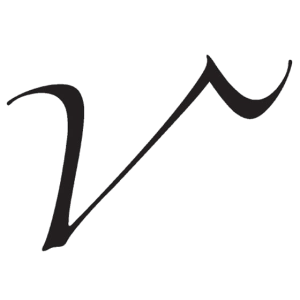If you are noticing large raised blood vessels or tiny, thread-like discoloration on your legs, or are experiencing leg pain, you’re not alone. In fact, according to the National Institutes of Health, an estimated 60 percent of all men and women suffer from some form of vein condition – generally varicose veins and spider veins. In order to be treated properly, you need to seek out a vein center NJ community members’ trust. Here’s what you need to know first.

What Causes Varicose Veins and Spider Veins?
A variety of factors can predispose or contribute to a person developing varicose veins and spider veins, including:
- Heredity
- Obesity
- Occupations that involve periods of standing, such as factory workers, teachers, hair stylists and nurses
- Life-stage hormonal influences and birth control pills
- A history of blood clots
- Conditions that cause increased abdominal pressure, such as girdles, constipation, and tumors
- Exposure to ultraviolet rays
Symptoms of Varicose Veins and Spider Veins
If you suffer from varicose veins, you likely experience pain such as aching or cramping in your legs. Other common complaints may include a heavy feeling in the legs, tingling, throbbing, burning, tiredness, or restlessness in the legs. Not everybody with vein conditions has leg pain or other symptoms, though. For example, many people seek out local spider vein treatment NJ consultations because they are concerned about their appearance and are looking for cosmetic solutions.

Treatment Options for Varicose Veins and Spider Veins
The type of varicose veins treatment NJ vascular specialists offer can vary, but there are typically seven major forms of spider vein and varicose veins treatment options:
Lifestyle Changes – Weight loss if needed, frequent walking, a healthy diet, and good skin hygiene can all help treat vein conditions.
Support Stockings – The easiest and most conservative treatment approach is to always wear properly-fitting support hose or compression stockings, which can be purchased at a surgical supply store or some pharmacies. They are available in pantyhose, under-the-knee, and above-the-knee styles. Keep in mind while choosing the compression stocking that it should fit snugly around your ankle with pressure tapering off towards the top of the stocking.
Sclerotherapy – Sclerotherapy has been in use since the 1930s for the treatment of spider veins. The Sclerotherapy NJ vascular specialists inject one of several FDA-approved sclerosants directly into the vein, causing the vein to close. Sodium chloride should be avoided as the sclerosing agent as it causes severe pain upon injection, and could result in serious complications.
Sclerotherapy treatment is fairly inexpensive, does not involve anesthesia, and is performed in an outpatient setting. You can return to your daily routine after the procedure with some minimal limitations, which includes avoiding direct sun exposure to the treated areas, and wearing a compression stocking for several days.
Endovenous Laser Treatment – Also known as Endovenous Thermal Ablation or Endovenous Laser Treatment (EVLT). This is a relatively risk-free and extremely precise ultrasound imaging-guided treatment. This procedure involves inserting a small catheter with a laser tip directly into the vein. Then, pulses of laser light are delivered through the vein, causing it to collapse. Blood is diverted into other nearby non-diseased veins to relieve vein symptoms. Sometimes slight tiredness and soreness is experienced but it typically disappears within a few days. This procedure is performed in an outpatient setting under local anesthesia. Almost all insurance companies and Medicare cover the Endovenous Thermal Ablation procedure.
ClariVein – One of the most effective non-thermal treatment procedures of varicose veins is ClariVein. Unlike other Endovenous Laser Treatment, ClariVein doesn’t employ heat to treat the incompetent vein. It is a mechanical process in which a tiny rotating tip is inserted through a catheter into the vein allowing better, more effective, 360-degree coverage of a sclerosant chemical to treat the incompetent vein. Studies have shown that ClariVein causes 74% less pain than other catheter procedures.
Varithena – Varithena (Polidocanol Injectable Foam) is an FDA approved, injectable microfoam for the treatment of many varicose veins. Varithena is injected in the varicose veins utilizing ultrasound guidance. The injected Varithena foam results in the medicine uniformly coating the inside of the vein, thereby resulting in its closure. As this is a non-surgical method, it is often better tolerated than other catheter techniques. Varithena treatment generally takes less than 10 minutes, and patients can return to their normal daily routine in a single day with few limitations.
In order to alleviate leg symptoms of fatigue or pain throughout the day, the following tips may prove beneficial in decreasing your symptoms:
- Elevating your legs when sitting, especially if you are pregnant.
- Avoid sitting with your legs crossed, as this puts pressure on the veins.
- Get in the habit of walking at least 60 minutes every day. This may be broken up into 5-10 minute increments totaling 60 minutes.
- If you’re on a long flight or sitting in front of the computer, get up and walk about every hour. If you are unable to walk, simple calf muscle exercises can be very effective.
- Always wear compression stockings while driving for greater than 3 hours.
- Always wear compression stockings while flying in a pressurized cabin.
If you notice any discomfort in your legs that you think might be related to varicose or spider veins, don’t ignore your symptoms. Contact Dr. Stuart Miller, Medical Director of The New Jersey Vein and Vascular Center, who will be happy to evaluate your legs with a no-cost consultation.
